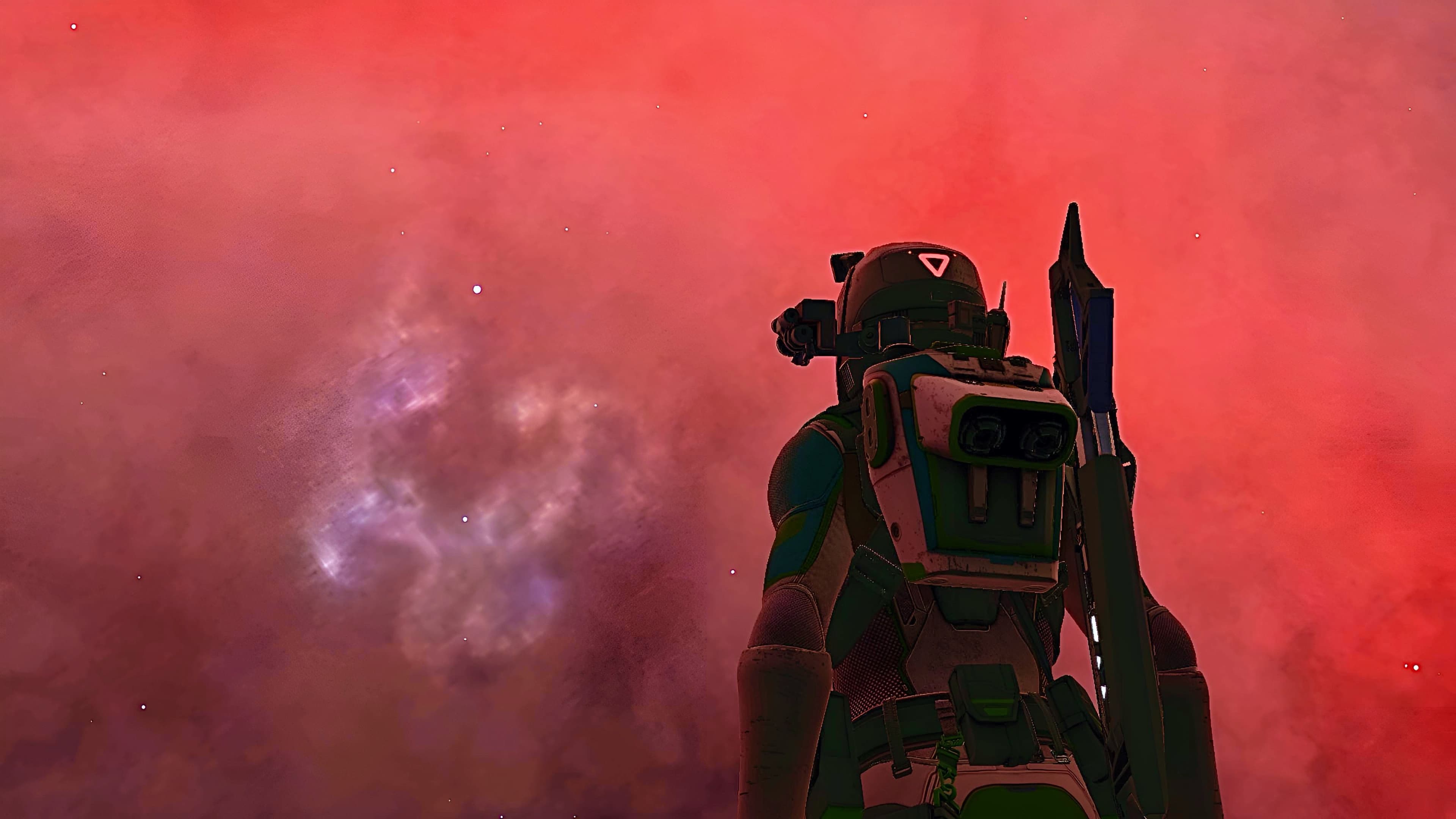Initial Setup and Login: Keybinds and Controls
Keybind Setup
After creating your commander and loading into the game for the first time, one of the most crucial steps is to configure your keybinds and controls. Elite Dangerous has a complex control system with many functions, and while the game offers several default presets, customizing your keybinds to suit your preferences and hardware can make a huge difference in your experience.
Choosing Your Control Scheme
Keyboard + Mouse: If you’re using a keyboard and mouse, you’ll need to bind keys for everything from basic flight controls to more advanced functions like targeting, scanning, and managing power distribution.
HOTAS (Hands on Throttle and Stick): If you have a HOTAS setup, you’ll want to carefully map out your controls to make the most of your hardware. This setup can provide a more immersive flight experience and is highly recommended if you plan to invest a lot of time in the game.
Gamepad: For those using a controller, the game offers preset schemes that are fairly intuitive, but you may still want to tweak them to fit your playstyle.
Key Areas to Customize
Basic Flight Controls: Set your pitch, yaw, and roll to comfortable keys or axes (if using a joystick or HOTAS). Ensure that thrust (forward/backward) and lateral/vertical thrust controls are easily accessible.
Combat and Targeting: Map your primary and secondary fire buttons, target cycling (next/previous target), and subsystem targeting to easily reachable buttons or keys.
Power Management: Efficient power distribution is critical in combat. Assign keys for redirecting power to systems (weapons, shields, engines) for quick adjustments in battle.
Landing Gear and Cargo Scoop: Make sure you have easily accessible buttons for toggling landing gear and deploying your cargo scoop. These are frequently used when docking and collecting materials.
Supercruise and Hyperspace: Set keys for entering/exiting supercruise and jumping to hyperspace, as you’ll be using these functions often when traveling between systems and stations.
Saving and Testing Your Keybinds
Save Custom Profiles: Once you’ve customized your keybinds, save your setup as a custom profile. This ensures you can easily reload your settings if they ever reset due to game updates or other issues.
Test in Training: After setting up your keybinds, head into one of the tutorials or the training grounds to test your setup. This is a safe environment to ensure everything works smoothly and feels comfortable before you venture out into the galaxy.
Pro Tip: If you're not sure how to set up your controls, there are many community-created control schemes available online. You can use these as a base and tweak them to your liking. Additionally, backup your keybinds periodically to avoid having to redo them in the future.
https://edrefcard.info/ can be a useful website.
By taking the time to set up your controls and keybinds from the start, you'll have a smoother experience and be more prepared for whatever the galaxy throws at you.
When you first log in, you'll need to create a commander (CMDR) and select a starting area. For most new players, starting in the Pilots' Federation district is a good choice, as it offers a safer environment to learn the game. Once you load in, you’ll be inside your starter ship, the humble Sidewinder, docked at a space station.
Your initial UI might seem cluttered, with various panels and information around your cockpit, but don’t worry—this becomes second nature over time. You'll soon notice the game offers two main control schemes: keyboard + mouse and HOTAS (Hands on Throttle and Stick). Both are viable, but if you have a HOTAS setup, it can provide a more immersive experience.
The Tutorials
Before launching into the game proper, it’s highly recommended to complete the in-game tutorials. These can be found in the "Training" menu and cover the basics of flight, combat, and docking.
Tips for Tutorials:
Format: The tutorials are presented as standalone missions where you learn specific mechanics like basic flight, supercruise (faster-than-light travel within star systems), docking, and combat.
Duration: Each tutorial lasts between 5 to 15 minutes, depending on the complexity of the task. You can repeat them as many times as needed to feel comfortable.
Missing Elements: While the tutorials cover the essentials, they don’t go into advanced gameplay, such as fuel management, engineering, or complex mission structures. Learning these elements will come from experience and community resources.
Tips for Tutorials:
Docking: Practice docking repeatedly until you feel comfortable. It's trickier than it looks, but essential.
Combat: The combat tutorial provides a basic dogfighting experience, but real battles can be more complex, so try to master target tracking and energy management.
Supercruise: Learning how to slow down correctly when approaching planets or stations is crucial to avoiding overshooting your target.
Being Unleashed in the Galaxy: Your First Flight in the Sidewinder
Once you finish the tutorials and are ready to leave the space station, you'll be unleashed into the galaxy in your Sidewinder, which is the most basic ship in the game. Don't be fooled by its modest appearance—it's a capable starter ship and can handle many early missions.
Initial Flight Experience
Take-off and Flight: The first time you take off from the station, it can be both exhilarating and nerve-wracking. Follow the HUD instructions, request docking or take-off permissions, and remember to retract your landing gear before moving out of the station.
Navigation: You’ll quickly become familiar with the galaxy map and system map, which are your primary tools for finding destinations. Set a course for a nearby station, lock your destination, and use supercruise to travel there.
Docking: Practice docking at a few stations to solidify your skills. This can be stressful in busy stations, but with practice, it becomes second nature.
Appropriate Next Steps for Budding Pilots of All Inclinations
Once you've gotten comfortable flying and docking, it's time to figure out what kind of pilot you want to be. Elite Dangerous offers a range of careers and activities, and your next steps will depend on your interests.
Here are some early goals based on common career paths:
1. Trading
If you want to build wealth through trading goods between stations:
Start by accepting delivery or trading missions from station mission boards.
Use websites like
https://inara.cz/elite/ to find profitable trade routes.
Save up for a Hauler or Adder, which are better suited for trading than the Sidewinder.
2. Exploration
For those who crave the unknown and want to discover distant stars and planets:
Equip a fuel scoop to gather fuel from stars while traveling.
Use the Discovery Scanner to locate unexplored celestial bodies.
Plan your journeys with tools like Spansh for neutron star boosts and exploration routes.
Aim to upgrade to an Asp Explorer or Diamondback Explorer for deep space travel.
3. Bounty Hunting
Combat-oriented players may want to pursue bounty hunting:
Start by accepting combat missions or visiting Resource Extraction Sites (RES) to fight pirates.
Equip your ship with better weapons, shields, and armor.
Look for systems in a state of lawlessness, where bounties are plentiful.
Save up for a Viper Mk III or Vulture, which are excellent combat ships.
4. Mining
Mining can be a lucrative career, especially after getting used to the mining tools and systems:
Start with basic mining lasers and try your hand at asteroid mining.
Learn about hot spots for valuable minerals (e.g., Painite, Void Opals).
Upgrade to a Cobra Mk III or Type-6 to increase cargo capacity for more efficient mining.
5. Mission Running
If you prefer a mix of activities, running missions can be an excellent way to progress:
Accept missions from the mission board, including delivery, data transport, and combat missions.
Work towards building reputation with factions to unlock higher-paying missions.
Mission running can lead you into various careers, including smuggling, espionage, and more.
Where Players Might Go and What They Might Do in Order to Get Started with Common Elite Careers
Once you’ve decided on a career, here are some places and resources to help you get started:
Resource List for Elite Dangerous
1. Inara (inara.cz)
Overview: Inara is a comprehensive resource that covers everything from trading and engineering to mission planning. It allows players to track their commander’s progress, manage their fleet, and access detailed information on systems, stations, and factions.
Uses: Trading, engineering, mission planning, and community support.
2. EDSM (Elite Dangerous Star Map) (edsm.net)
Overview: EDSM is a community-driven star map that tracks star systems and exploration data. It’s ideal for explorers looking to track their journeys, upload exploration data, and plan routes across the galaxy.
Uses: Exploration, route planning, and system information.
3. ED Tools (edtools.cc)
Overview: ED Tools offers a collection of lightweight tools for finding trade routes, gathering materials, and planning engineering upgrades.
Uses: Trading, material gathering, and outfitting guidance.
4. Spansh (spansh.co.uk)
Overview: Spansh is a powerful route planner, particularly useful for long-distance exploration and neutron star routes. It calculates efficient routes, helping explorers travel vast distances more quickly.
Uses: Exploration route planning, including neutron star highway routes.
5. Elite Dangerous Wiki (elite-dangerous.fandom.com)
Overview: The Elite Dangerous Wiki is an extensive knowledge base, covering game mechanics, ships, modules, factions, and career guides. It's a great starting point for new players looking to dive deeper into the game’s systems.
Uses: General game information, guides, and tips on various careers and activities.
6. ED Odyssey Materials Helper (github.com/jixxed/ed-odyssey-materials-helper/releases)
Overview: ED Odyssey Materials Helper is a third-party tool that helps players track materials for both the Horizons and Odyssey expansions. It simplifies the process of gathering and managing materials needed for engineering, crafting, and upgrades.
Uses: Material tracking and management for engineering and crafting.
7. EDHM (Elite Dangerous HUD Modding) (github.com/psychicEgg/EDHM)
Overview: EDHM is a tool that allows players to customize their in-game HUD colors and interface. It enables the customization of cockpit displays and menu elements, allowing for a more personalized experience.
Uses: HUD customization, color schemes, and interface adjustments to tailor the game’s look and feel to your preferences.
You can also find friendly and helpful players on Twitch (www.twitch.tv/directory/category/elite-dangerous) and you can learn by watching and asking questions :)
Remember: Elite Dangerous is a marathon, not a sprint. Focus on small, manageable goals, and don’t be afraid to ask for help from the community. There's a lot to learn, but taking it one step at a time makes it incredibly rewarding. Good luck, Commander!



















